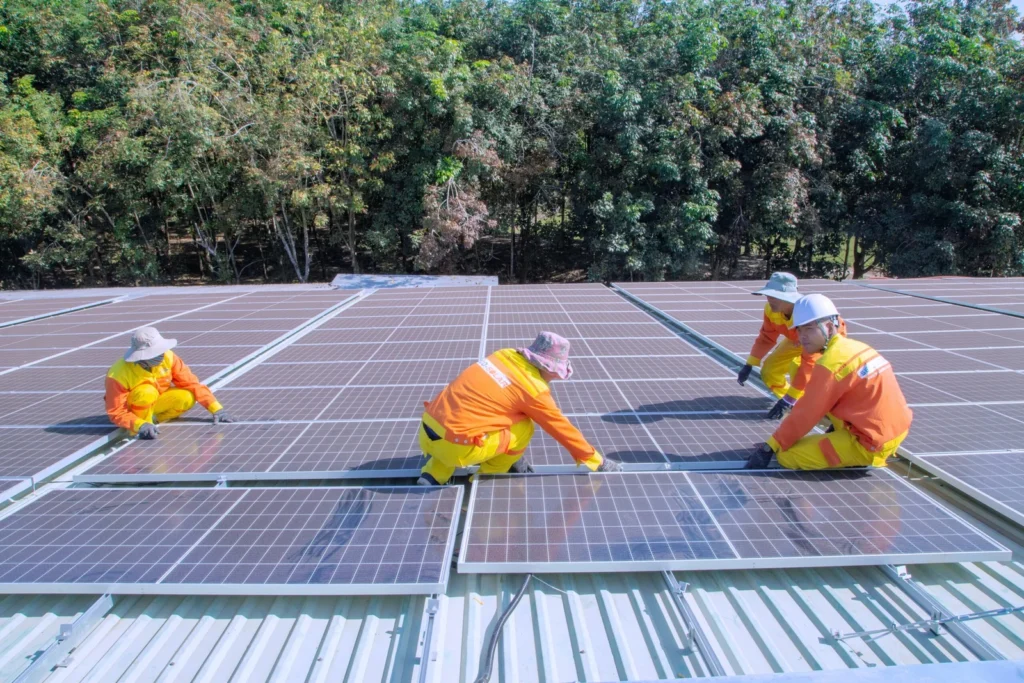In recent years, solar energy has emerged as a sustainable and cost-effective alternative to conventional electricity. With rising electricity costs and increasing environmental concerns, solar panel installation has become a popular choice for homeowners and businesses alike. This article provides a comprehensive guide to solar panel installation, its benefits, and key considerations to ensure a successful setup.
What is Solar Panel Installation?
Solar panel installation involves setting up photovoltaic (PV) panels on rooftops or open spaces to capture sunlight and convert it into electricity. These panels are connected to an inverter that transforms the direct current (DC) generated into alternating current (AC), which can be used to power your home or office appliances.
The process also includes wiring, mounting the panels on a suitable structure, and integrating them with your existing electrical system. Proper installation is crucial for maximizing efficiency and ensuring the safety and longevity of your solar energy system.
Benefits of Installing Solar Panels
1. Reduce Electricity Bills
One of the most significant advantages of solar panel installation is the potential for reduced electricity bills. By generating your own electricity, you rely less on utility providers and can save a substantial amount over time. In some regions, excess electricity can even be sold back to the grid, further enhancing your savings.
2. Environmentally Friendly Energy
Solar energy is a clean, renewable resource. Unlike fossil fuels, it produces no greenhouse gas emissions, helping to reduce your carbon footprint. By installing solar panels, you contribute to environmental sustainability and promote a greener planet.
3. Increase Property Value
The value of a property often increases when solar panels are installed in homes and businesses. Energy-efficient properties are highly attractive to buyers and can offer long-term financial benefits.
4. Energy Independence
Solar panels provide a level of energy independence, reducing reliance on the power grid. This is especially beneficial in areas prone to frequent power outages or rising electricity costs.
Key Considerations Before Installation

1. Assess Your Energy Needs
Before installing solar panels, evaluate your energy consumption. Determine how much electricity your household or business uses on average and consider the number of panels required to meet your needs.
2. Roof Condition and Orientation
Solar panel efficiency is determined by the quantity of sunshine they are exposed to. South-facing roofs with minimal shading are ideal for maximum energy generation. Ensure your roof is in good condition to support the panels safely.
3. Choose the Right Solar Panel System
The many kinds of solar panels include thin-film, polycrystalline, and monocrystalline.Professional installation is advised to guarantee safety and optimal performance, even though DIY installation is feasible. Each type has its advantages and efficiency levels. Consult with a professional installer to select the system that best fits your requirements and budget.
4. Professional Installation
Professional installation is advised to guarantee safety and optimal performance, even though DIY installation is feasible. Certified installers have the expertise to handle wiring, permits, and grid connections efficiently.
Maintenance and Longevity
Solar panels require minimal maintenance. Routine maintenance and routine checks can aid in efficiency. Most panels come with warranties of 20-25 years, ensuring long-term reliability and performance.
Solar panel installation is a smart investment for both residential and commercial properties. It offers financial savings, environmental benefits, and energy independence while increasing property value. By carefully planning your installation and consulting with experienced professionals, you can harness the power of the sun and enjoy a sustainable energy solution for years to come.
Read Also: Laravel Framework Web Development
![]()





